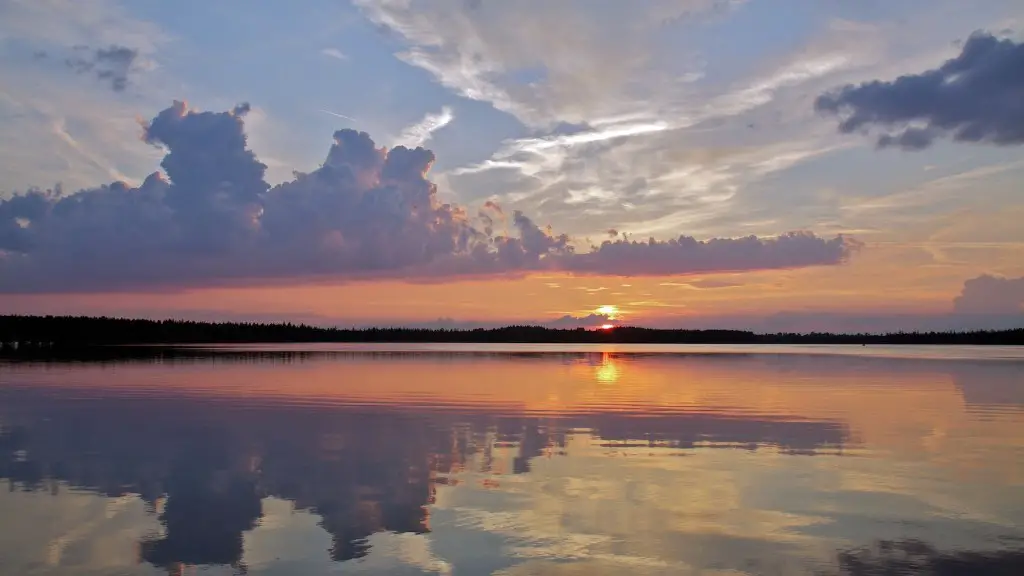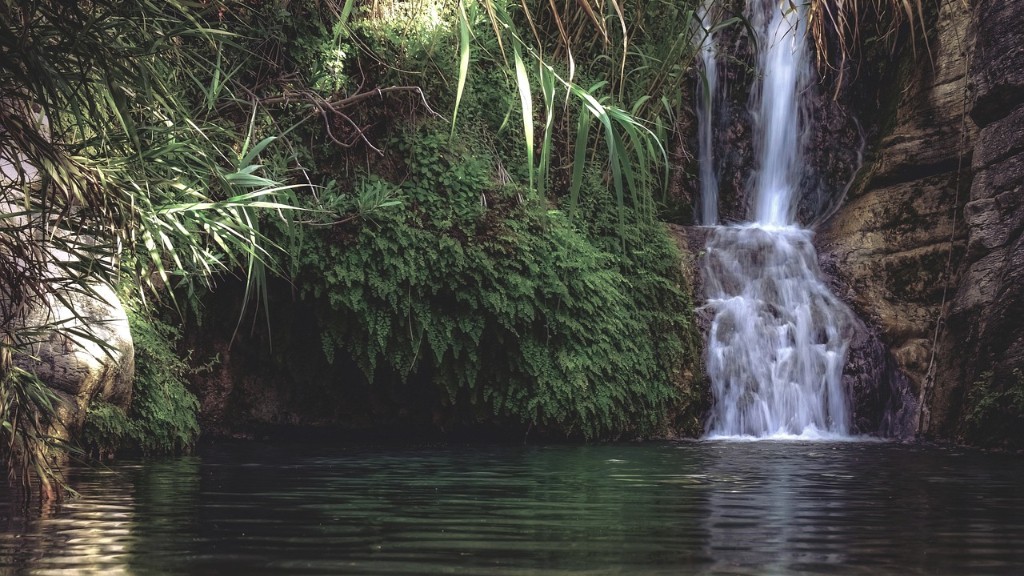Where Does the Mississippi River Come From?
Tracing the origins of the mighty Mississippi River is no easy task. Along with being one of the longest rivers in the world at nearly 2,500 miles long, the Mississippi has a complicated and interwoven history that speaks to its power and influence as a navigable waterway. In this article, we’ll explore where the Mississippi River comes from, its significance to the people who lived and lived along its shores, and some of the physical and natural events that created the river as we know it today.
The Source of the Mississippi
The source of the Mississippi can be traced back to Lake Itasca in northcentral Minnesota. A wide and shallow lake, Itasca is often called the birthplace of the Mississippi. From there, the river runs south, passing through 10 states before flowing into the Gulf of Mexico. Its main headwaters are the Big Fork, Little Fork, and Prairie Rivers, all of which feed into Lake Itasca.
The Mississippi River is the fourth longest river system in the world, and the third largest in North America, after the St. Lawrence and Mackenzie Rivers. It is also the second-largest drainage basin in the country, covering more than 1.2 million square miles, or roughly 41% of the Contiguous United States.
The Historical Significance of the River
For centuries, the Mississippi River has been a vital transportation and communication link between the Great Lakes and the Gulf of Mexico, allowing American pioneers to spread their settlements further and further away from the original 13 colonies. During the days of the steamboat, it was an essential trade route, allowing for the exchange of goods up and down the river. It was also an important pathway for explorers and traders from Europe, who played a significant role in the settlement and development of the American Midwest in the 1800s.
Along with its economic importance, the Mississippi River has historically been a powerful cultural and spiritual force among the many ethnic and social groups living in its watershed. Native Americans have a long and complex history with the river, and archaeological evidence suggests that various tribes inhabited its banks as far back as 6,000 years ago. The tribes referred to the Mississippi as Father of Waters and believed it was connected to the spirit world. For generations, these people worshiped, fished, and traveled its tributaries, and in many ways the river was seen as a provider and protector.
Physical and Natural Events that Formed the Mississippi
The Mississippi today is the result of many years of natural geologic events, primarily erosion and flooding, as well as human activities such as channelization, damming, and land-use changes. Geologists believe the land that eventually became the river was shaped by glacial activity that occurred during the last Ice Age, which began around 70,000 years ago.
As glaciers moved across the land, they carved out deep channels and valleys, pushing rocks and sediment into the hollow places they left behind. This eventually created the banks of the Mississippi, as we know it today. Over the millennia that followed, different branches of the river split off and rejoined, creating a complex delta system and dramatically altering the landscape of the area.
In addition to the geological events that shaped the river, humans have had an indelible impact on its course. Dams, levees, locks and various forms of man-made engineering have helped to keep the river in line, controlling the sometimes-violent motion of flood waters and providing a navigable route for boats.
The Effect of the River on the Environment
The Mississippi River is an incredibly important resource, both for human life and the environment. It plays a key role in the health of the whole Mississippi River basin, providing fresh, clean water while cycling vital nutrients and sediments. The river acts as a giant sponge, absorbing pollutants such as phosphorus and nitrogen, as well as chemicals and other hazardous substances, and carrying them away downstream.
At the same time, the river is home to a wide variety of animal and plant species, some of which are found only within its banks. Countless kinds of fish, birds, reptiles, amphibians, and other wildlife depend on the river for their survival. It is also an important migratory corridor for numerous species of migratory birds that travel thousands of miles each year along the Mississippi flyway.
The Economic Impact of the Mississippi
The economic impact of the Mississippi is felt all along its banks, from Minnesota to the Gulf of Mexico. As one of the main arteries of the American Midwest, it has played an essential role in the development and growth of the region’s economy, allowing industry and commerce to flourish.
Today, the river’s importance to the economy of the ten states it passes through cannot be overstated. It generates billions of dollars of revenue each year through tourism, transportation, and commercial fishing, and it is home to some of the world’s most important ports and shipping centers, such as the Port of New Orleans.
In addition to its economic significance, the Mississippi River is an important cultural landmark, a connection to our nation’s past, and an unforgettable natural wonder.
The Mississippi During the Industrial Revolution
During the Industrial Revolution, the Mississippi River was a vital transport link for commercial goods and the raw materials needed to power growth in the cities. This newfound importance led to the development of locks and dams along the river, which allowed ships to travel upstream and access further and further inland.
At the same time, the massive growth in industry took its toll on the river, with factories and mines dumping their waste directly into the water. This led to a severe decline in fish and wildlife populations, as well as a rise in dangerous waterborne illnesses. Eventually, laws were passed to regulate the river and its use, but the damage had already been done.
The Impact of the Mississippi River on Native American History and Culture
Since time immemorial, the Mississippi River has been an important part of Native American life and culture. It provided food, shelter, and protection for countless generations of Native Americans, who depended on its resources for their survival.
In addition to being a source of sustenance, the river served as a means of transportation and communication. For centuries, it was used to trade goods and knowledge with other tribes, or even other nations, along its vast length. It was also a spiritual force, a vital connection to the spirit world, and home to some of the most important traditional ceremonies.
The Impact of Humans on the Mississippi River
Today, the Mississippi is the product of centuries of human activities and interventions. Along with the engineering projects that altered the course of the river, it has been heavily impacted by urbanization, deforestation, and agricultural run-off.
This has led to a decrease in water quality and a rise in pollutants, such as mercury, lead, and other toxins, in the river. It has also caused a drastic decline in fish and wildlife populations, with some creatures like the pallid sturgeon, which lived in the river for thousands of years, now on the brink of extinction.
The Environmental Protection of the Mississippi
With human activities continuing to take their toll, conservation efforts have been put into place to protect the river and its inhabitants. Programs have been developed to restore and protect the river’s natural habitat, as well as to reduce and prevent hazardous waste from entering it.
In addition, many organizations, both on the local and national level, have been created to raise awareness and provide education about the importance of the Mississippi River and its unique ecosystem. These groups are dedicated to restoring the river to its former glory and protecting it for future generations.
Conclusion
From its source in Lake Itasca to its outlet near the Gulf of Mexico, the Mississippi River is a force of nature that has left an indelible mark on the landscape and the people who inhabit its banks. It is one of the most important waterways in North America and its history is filled with tales of adventure and discovery, as well as tragedy and sorrow. Today, the Mississippi is a vital source of life and livelihood, but is also in need of protection from human activities. With continued conservation efforts and educational initiatives, this mighty river can continue to provide for future generations.





